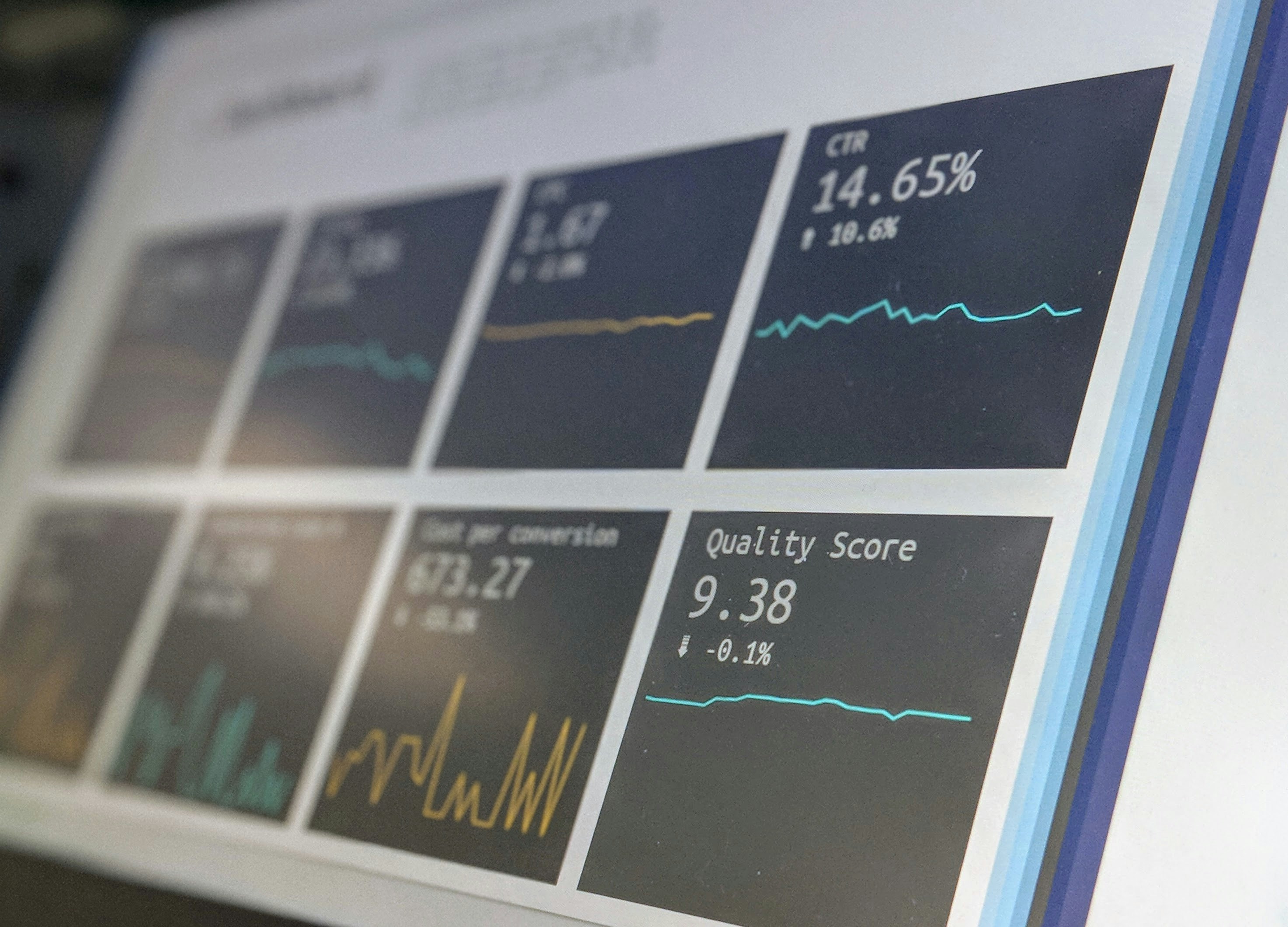AI Tools Reviews
In the world of artificial intelligence, staying up to date with the latest tools is essential. That’s why I’m thrilled to present to you “Top AI Newest Tools Reviews.” This comprehensive collection of reviews aims to provide you with valuable insights into the most cutting-edge AI tools available. With each article, you’ll find detailed analysis and evaluations. Explore the world of AI like never before with “Top AI Newest Tools Reviews.”
1. Chatbots
Chatbots have become increasingly popular in recent years, revolutionizing the way businesses interact with their customers. By leveraging natural language processing (NLP) and machine learning algorithms, chatbots are able to understand and respond to user messages in a more human-like manner. This enables businesses to provide prompt and efficient customer service, 24/7.
1.1 Natural Language Processing (NLP)
Natural Language Processing (NLP) is a branch of AI that focuses on the interaction between computers and human language. It allows chatbots to understand and interpret user input in a way that resembles human comprehension. NLP algorithms are designed to analyze the structure and meaning of sentences, allowing chatbots to provide accurate and relevant responses to user queries.
1.2 Machine Learning Algorithms
Machine learning algorithms play a crucial role in enhancing the capabilities of chatbots. Through continuous learning and training, chatbots can improve their responses based on user feedback and historical data. By analyzing past interactions and patterns, machine learning algorithms enable chatbots to provide more personalized and context-aware responses, enhancing the overall user experience.
1.3 User Interface (UI) Design
User interface (UI) design is an essential aspect of chatbot development. A well-designed user interface ensures that the chatbot is easy to use, visually appealing, and intuitive. Effective UI design incorporates elements such as clear and concise messaging, easy navigation, and visually engaging components. A user-friendly interface enhances the user experience and encourages users to interact with the chatbot more frequently.
2. Speech Recognition
Speech recognition technology has gained significant traction in recent years, offering a more convenient and hands-free mode of interaction with AI systems. With advancements in voice-to-text conversion and speaker recognition, speech recognition has become an integral part of various applications and devices.
2.1 Voice-to-Text Conversion
Voice-to-text conversion, also known as speech-to-text or automatic speech recognition (ASR), converts spoken language into written text. This technology enables users to dictate messages, compose emails, and interact with virtual assistants through voice commands. Voice-to-text conversion has applications in transcription services, language learning, and hands-free communication.
2.2 Speaker Recognition
Speaker recognition technology is used to identify and verify the identity of an individual based on their voice patterns. It can be applied in voice authentication systems, enhancing security measures and providing an additional layer of verification. Speaker recognition is also used in voice-controlled devices, allowing personalized user experiences based on recognized voices.
2.3 Voice Search Optimization
Voice search optimization is a technique used to optimize content for voice-based search queries. As more users rely on voice assistants and smart devices for information retrieval, businesses need to adapt their digital presence to accommodate voice search. This involves understanding natural language queries, optimizing content for voice-based responses, and ensuring compatibility with voice-enabled devices.
3. Image Recognition
Image recognition technology has made significant advancements in recent years, enabling computers to interpret and understand visual information. From object detection to facial recognition, image recognition plays a vital role in various applications such as autonomous vehicles, security systems, and e-commerce.
3.1 Object Detection
Object detection is the task of identifying and locating specific objects within an image or video. It enables computers to detect and track objects of interest, such as vehicles, pedestrians, or products. Object detection has applications in automated surveillance, self-driving cars, and inventory management.
3.2 Facial Recognition
Facial recognition technology analyzes facial features and patterns to identify individuals. It has applications in security systems, law enforcement, and user authentication. Facial recognition technology is also utilized in social media platforms for automatic tagging of users in uploaded photos.
3.3 Visual Search
Visual search technology allows users to search for information using images instead of text queries. By analyzing the visual features of an image, such as shape, color, and texture, visual search engines can retrieve relevant information and similar images. This technology is particularly useful in e-commerce, where users can search for products by uploading images or taking photos.
4. Recommendation Systems
Recommendation systems utilize AI algorithms to provide personalized recommendations based on user preferences and behavior. By analyzing user data and patterns, recommendation systems can suggest relevant products, movies, articles, or music, enhancing user engagement and satisfaction.
4.1 Collaborative Filtering
Collaborative filtering is a commonly used technique in recommendation systems. It analyzes user behavior and preferences to identify similar users and generate recommendations based on their shared interests. Collaborative filtering can be based on user-item interactions, such as ratings or purchases, or user-user interactions, such as social connections or similarity in browsing behavior.
4.2 Content-Based Filtering
Content-based filtering recommends items to users based on their past preferences and the content features of the items themselves. It analyzes the characteristics and attributes of items, such as genre, keywords, or metadata, to generate recommendations that are similar to the user’s previous choices. Content-based filtering is particularly effective in recommending items in niche domains with limited user data.
4.3 Hybrid Approaches
Hybrid approaches combine different recommendation techniques, leveraging the strengths of collaborative filtering and content-based filtering. By integrating multiple algorithms and data sources, hybrid recommendation systems can provide more accurate and diverse recommendations, improving user satisfaction and engagement.
5. Natural Language Processing (NLP)
Natural Language Processing (NLP) is a key component in many AI applications, enabling computers to understand and process human language in a meaningful way. NLP techniques are instrumental in sentiment analysis, named entity recognition, and text summarization.
5.1 Sentiment Analysis
Sentiment analysis, also known as opinion mining, is a technique used to determine the sentiment expressed in a piece of text. It analyzes the emotional tone and polarity to identify whether it is positive, negative, or neutral. Sentiment analysis has applications in social media monitoring, market research, and customer feedback analysis.
5.2 Named Entity Recognition (NER)
Named Entity Recognition (NER) is a subtask of NLP that focuses on identifying and classifying named entities in text, such as names, locations, organizations, or dates. NER is particularly useful in information extraction, text analysis, and question answering systems. It enables computers to understand the context and meaning of specific entities mentioned in the text.
5.3 Text Summarization
Text summarization is the process of automatically generating a concise and coherent summary of a given piece of text. It involves extracting the most important information and key points while preserving the overall meaning. Text summarization has applications in news aggregation, document summarization, and content generation.
6. Machine Learning
Machine learning is a subfield of AI that focuses on developing algorithms and models that enable computers to learn and make predictions without being explicitly programmed. It encompasses supervised learning, unsupervised learning, and reinforcement learning.
6.1 Supervised Learning
Supervised learning is a machine learning technique where a model learns from labeled training data to make predictions or classify new instances. The model is trained with input-output pairs, allowing it to generalize and make accurate predictions on unseen data. Supervised learning is widely used in tasks such as image classification, spam detection, and sentiment analysis.
6.2 Unsupervised Learning
Unsupervised learning involves training a model on unlabeled data without any predefined output. The model learns to find patterns, structures, and relationships in the data, allowing for tasks such as clustering, dimensionality reduction, or anomaly detection. Unsupervised learning is useful in scenarios where labeled data is scarce or unavailable.
6.3 Reinforcement Learning
Reinforcement learning is a learning paradigm where an agent learns through interactions with an environment, receiving feedback in the form of rewards or penalties. The agent aims to maximize its cumulative reward by taking actions that lead to favorable outcomes. Reinforcement learning has applications in game playing, robotics, and autonomous decision-making.

7. Predictive Analytics
Predictive analytics utilizes historical data and statistical techniques to make predictions about future events or outcomes. By analyzing patterns and trends, predictive analytics can provide valuable insights and inform decision-making processes.
7.1 Forecasting
Forecasting is a predictive analytics technique that involves predicting future values or trends based on historical data. It is used in various domains, such as sales forecasting, demand planning, and financial projections. By identifying patterns and seasonality in data, forecasting models can make accurate predictions for future time periods.
7.2 Classification
Classification is a predictive analytics technique that involves categorizing instances into predefined classes or categories. It is used in tasks such as customer segmentation, fraud detection, and sentiment analysis. Classification models learn from labeled training data to classify new instances into appropriate classes based on their features.
7.3 Regression
Regression analysis is a predictive analytics technique that involves modeling the relationship between variables to predict numerical values. It is used in tasks such as price prediction, demand estimation, and trend analysis. Regression models identify the statistical relationship between input variables and the target variable to make accurate predictions.
8. Computer Vision
Computer vision is an interdisciplinary field that focuses on enabling computers to understand and interpret visual information from images or videos. It encompasses tasks such as image segmentation, object recognition, and optical character recognition.
8.1 Image Segmentation
Image segmentation is the process of dividing an image into meaningful and semantically consistent regions. It allows computers to distinguish between different objects or regions within an image, enabling further analysis and processing. Image segmentation has applications in medical imaging, autonomous driving, and object detection.
8.2 Object Recognition
Object recognition is the task of identifying and classifying specific objects within an image or video. It enables computers to detect and categorize objects, such as cars, animals, or landmarks. Object recognition has applications in surveillance systems, augmented reality, and autonomous robotics.
8.3 Optical Character Recognition (OCR)
Optical Character Recognition (OCR) is a technology that converts printed or handwritten text into digital text, making it machine-readable. It enables computers to interpret and process textual information from images, scanned documents, or video frames. OCR has applications in document digitization, data extraction, and accessibility for visually impaired individuals.

9. Robotic Process Automation (RPA)
Robotic Process Automation (RPA) involves the automation of repetitive and rule-based tasks using software robots or bots. RPA technology can mimic human interactions with digital systems and perform tasks such as data entry, form filling, and report generation, freeing up human employees to focus on more complex and value-added activities.
9.1 Automation Workflows
Automation workflows involve designing and implementing sequences of automated actions to complete specific business processes. RPA platforms provide visual interfaces that enable users to define workflows by dragging and dropping pre-built components. Automation workflows can streamline repetitive tasks and ensure consistent and efficient execution of business processes.
9.2 Data Extraction
Data extraction is a key capability of RPA that involves extracting structured or unstructured data from various sources such as documents, databases, or websites. RPA bots can retrieve data, transform it into a desired format, and populate databases or generate reports automatically. Data extraction reduces manual effort, improves accuracy, and enables faster data processing.
9.3 Task Scheduling
Task scheduling is an important aspect of RPA that involves orchestrating the execution of tasks or workflows based on predefined schedules or triggers. RPA platforms provide scheduling functionalities that allow users to define when and how frequently bots should perform specific tasks. Task scheduling ensures timely execution of automated processes and minimizes manual intervention.
10. Virtual Assistants
Virtual assistants, such as Siri, Alexa, and Google Assistant, have gained widespread popularity and have become an integral part of many households and mobile devices. Virtual assistants leverage AI technologies, such as natural language understanding (NLU) and voice-activated AI, to provide personalized recommendations and assist users in various tasks.
10.1 Voice-Activated AI
Voice-activated AI enables users to interact with virtual assistants or other AI systems using voice commands. By leveraging speech recognition and natural language processing techniques, virtual assistants can understand and interpret user queries, perform tasks, and provide relevant information or recommendations through voice responses. Voice-activated AI enables hands-free and convenient interaction with AI systems.
10.2 Personalized Recommendations
Virtual assistants can provide personalized recommendations based on user preferences, historical data, and contextual information. By analyzing user behavior, virtual assistants can suggest relevant products, services, or content, enhancing user engagement and satisfaction. Personalized recommendations enable virtual assistants to tailor their responses and suggestions according to individual user needs.
10.3 Natural Language Understanding (NLU)
Natural Language Understanding (NLU) is a crucial component of virtual assistants that enables them to comprehend and interpret user input in a meaningful way. NLU algorithms analyze the structure, grammar, and semantics of user queries to understand the underlying intent and extract relevant information. NLU technology allows virtual assistants to provide accurate and context-aware responses, enhancing the overall user experience.
In conclusion, AI tools and technologies continue to evolve and play a significant role in various domains. From chatbots and speech recognition to recommendation systems and virtual assistants, AI is transforming the way we interact with technology and enhancing our everyday lives. With continuous advancements in AI, we can expect further innovation and improvements in the years to come.
Visit our Home page Here


